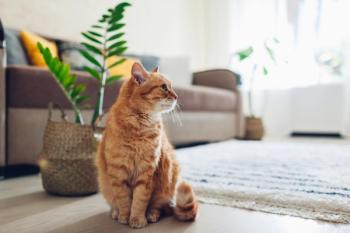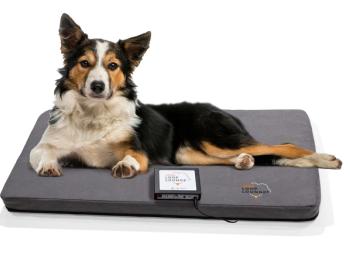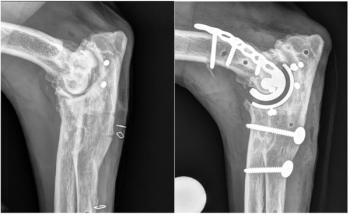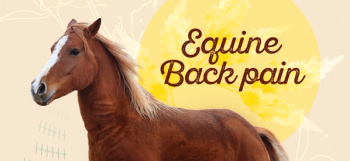
Features of feline anesthesia and pain management (Proceedings)
Cats have relatively deficient hepatic glucuronidation mechanism.
Coexisting Disease and Special Considerations
• Hyperthermia
• HCM
• Feral Cat Programs
• Peri-Operative Analgesia
o Declaw Pain
Metabolism of Drugs
• Cats have relatively deficient hepatic glucuronidation mechanism
• Fewer hepatic UDP-glucuroninosyltransferase (UGT) isoforms, perhaps due to strict carnivorous diet and lack of exposure to plants and phytoalexins
• Lack of morphine-6-glucuronide formation
• Toxicity of acetaminophen and other phenols and NSAIDs
• Anesthetic Hyperthermia in Cats
• Drugs and stressors implicated
• Some opioids implicated:
o hydromorphone, oxymorphone, fentanyl (Duragesic), morphine
• Dose dependent (±)
• Reversal of opioid with antagonists
• Symptomatic / Supportive treatment
o Vasodilation, sedation, active cooling
o Monitoring to avoid over-correction
Hypertrophic Cardiomyopathy
• Subclinical HCM is a nasty silent killer!
• It converts otherwise very safe and useful anesthetic techniques into a substantial threats to survival
• HCM plus ketamine or Telazol kills lots of cats! So can HCM plus isoflurane!
• No adequate and practical screening tests as yet.
• HCM is a failure of relaxation (lusitropy), rather than contraction
• Limited ventricular volume and limited coronary blood flow
• Priorities:
o slow heart rate
o maintain preload
Anesthetic Techniques for Cats with (suspected) HCM
• Minimize stress and excitement
• Avoid acepromazine (to maintain preload)
• Avoid anticholinergics
• Benzodiazepine (midazolam or diazepam, potential for excitement)
• Medetomidine (controversial ?) for HCM with LVOT obstruction
• Opioids (butorphanol, hydromorphone, buprenorphine, fentanyl)
• Propofol, Etomidate
• Halothane, Isoflurane (worst), Sevoflurane (best)
• Fluid therapy to maintain preload, but limited with any signs of heart failure
• Monitoring and Support
NSAIDs in Cats
• Meloxicam, 0.1 mg/kg, q24h. For 2-3 days mg/cat, oral suspension, one drop q24h)
• EU approved label for chronic administration of meloxicam in cats
• Ketoprofen, 1.0-2.0 mg/kg, SC, IM initially, then 0.5-1.0 mg/kg, PO, SC, q24h
• Carprofen, 1.0 mg/kg, PO, (1-2 doses only), q24h
• "Old School" - Aspirin in cats: "Just say NO!" Much longer dosing interval than in other species, leading to a greater risk of overdose (due to error) and greater toxicity than in dogs. Better options.
NSAIDs to Avoid in Cats
• Aspirin
• Ibuprofen
• Indomethacin
• Naproxen
• Acetaminophen!!!
All are extremely toxic in cats.13 year old cat can no longer jump on the bathroom counter to get a drink.
What are your comments on the best practice treatments for arthritis in cats? (Recent lab work was normal)
Our cat, Don Juan is a 13.5 neutered male cat that weighs 13 pounds and his body score is 5/9.
One recommendation: "Adequan first (5 mg/kg sq, 2X weekly X 2 wks, then once weekly X 2 weeks, then every other week X 4 wks, then monthly long term). We sell a whole bottle to the client and teach them to give injections at home, give them a check sheet, etc. The results are usually dramatic! If that does not help, then we turn to other/additional interventions." (Ben Leavens, DVM Ron Tenney, DVM)
Buprenorphine for Cats
• Excellent oral transmucosal availability in cats
o (not quite as complete in dogs)
o Nice to send home for post-op analgesia in cats, often with meloxicam.
• Long duration of action
• Ceiling effect on respiratory depression, but perhaps not on analgesic effect
• Slow onset of analgesia and sedation, even after IV administration
Lidocaine CRI in Cats
• Anesthetic and analgesic effect only at high doses approaching toxicity
• Therefore usually not worth including - with a few exceptions
Propofol Toxicity in Cats
• 2,6, di-isopropyl phenol
• Phenol toxicity upon repeated or continuous use
• Propofol is still a very useful anesthetic for cats - with some limitations
Feral Cat Neuters and Spays
• Large production, assembly (disassembly) line scale, minimal costs and maximum yields, volunteer staff, strict protocols (Dr. Julie Levy, et al.)
Our own Feral Fixin's program
• TKXBup + Meloxicam
Principles in Pain Management
Preemptive Analgesia
• Pre operative analgesics (as well as post op)
Balanced Analgesia
• Combined multi-modal strategies
• (opioids, locals, dissociatives, NSAIDs)
Dose to Effect
• "Give until it helps"
• Respond to individual needs
Recognition of Clinical Pain in Cats
Behaviors as Potential Indicators of Pain in the Cat
• Poor or lack of grooming
• Hissing or aggression if the painful part is manipulated
• Tendency to hide the painful part and look normal
• Dissociation from the environment
• Vocalization is rare
Pain Scales: Visual Analog Scale (VAS)
• Use of the VAS to evaluate pain management
• Scale of no pain to worst pain ever, 0-100 mm
Benefits of Pain/Stress Management
• Reduced sympathetic stimulation
o Better control of cardiovascular function
o Reduced neurologic stimluation
o (maladaptive neuro-endocrine response, particularly for the critically ill and severely injured)
• Improved eating & drinking
• Improved general well being
Epidural Analgesia in Cats
• More caudal cord termination and a smaller LS space than in dogs
• Duramorph
o Preservative-free morphine
o 0.1 mg/kg
• Marcaine
o Bupivacaine
o (q.s. 0.2 ml/kg)
o "selective block"
o augments opioid
Force Plate Evaluation of Pain and Analgesia in Cats
• Eval transderm fentanyl...onychectomy. J. Franks, et.al, JAVMA, 217, 1013, 2000.
Distal Limb Blocks for Declaw Analgesia:
• Median nerve
• Ulnar nerve
o Palmar branch
o Dorsal branch
• Radial nerve
o Superficial branches
• "Ring block" at carpus serves the same purpose
Newsletter
From exam room tips to practice management insights, get trusted veterinary news delivered straight to your inbox—subscribe to dvm360.






